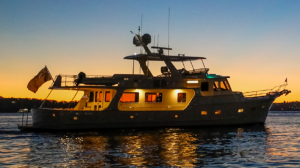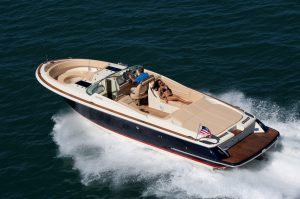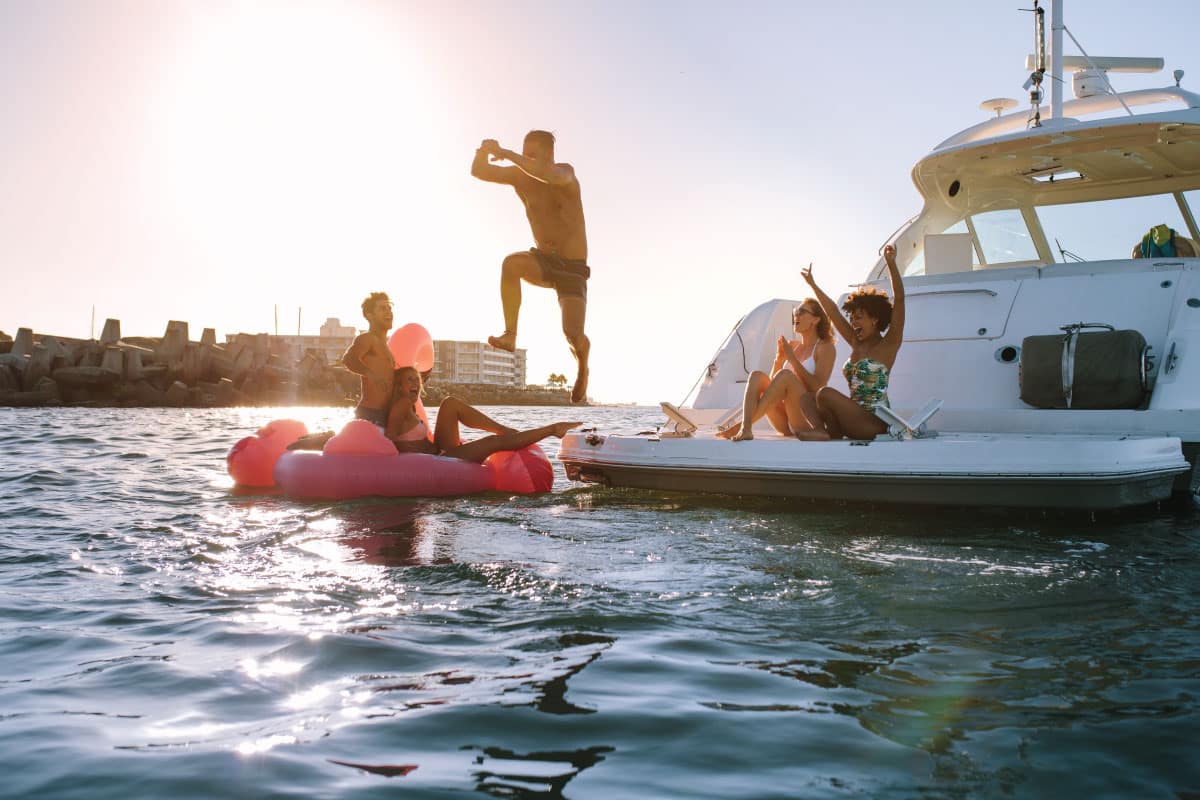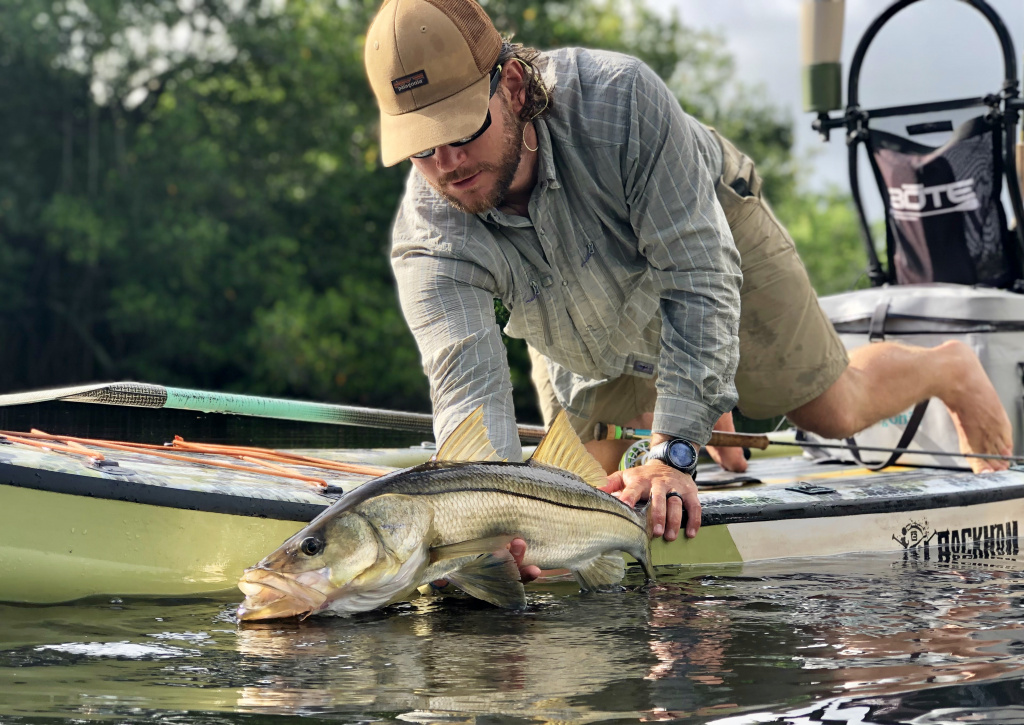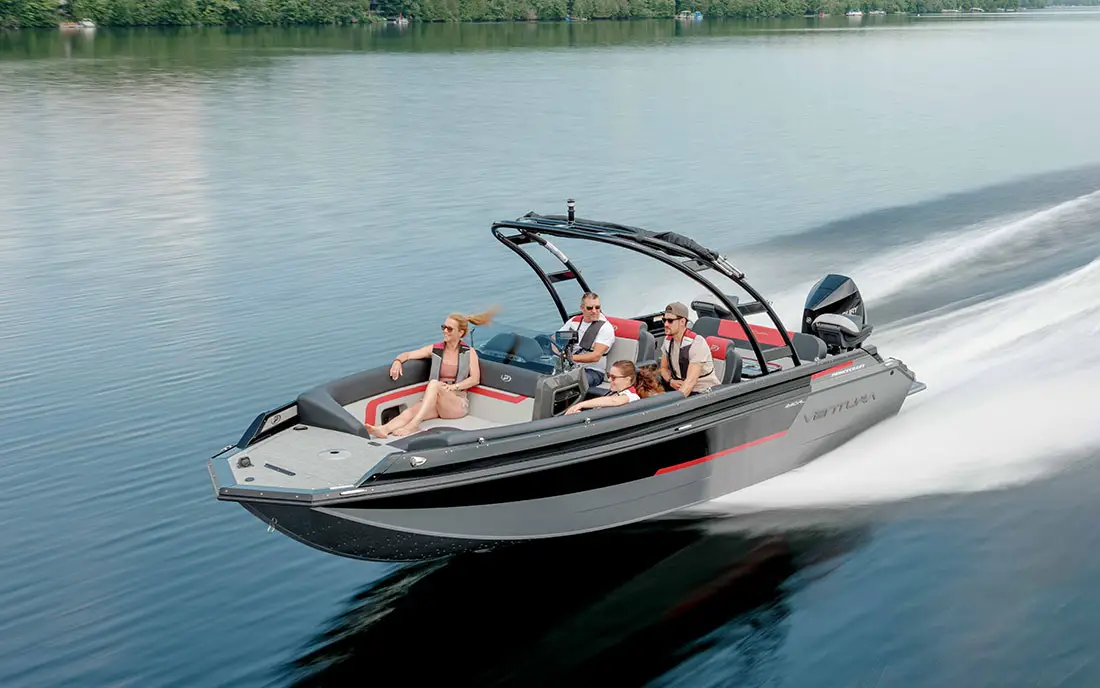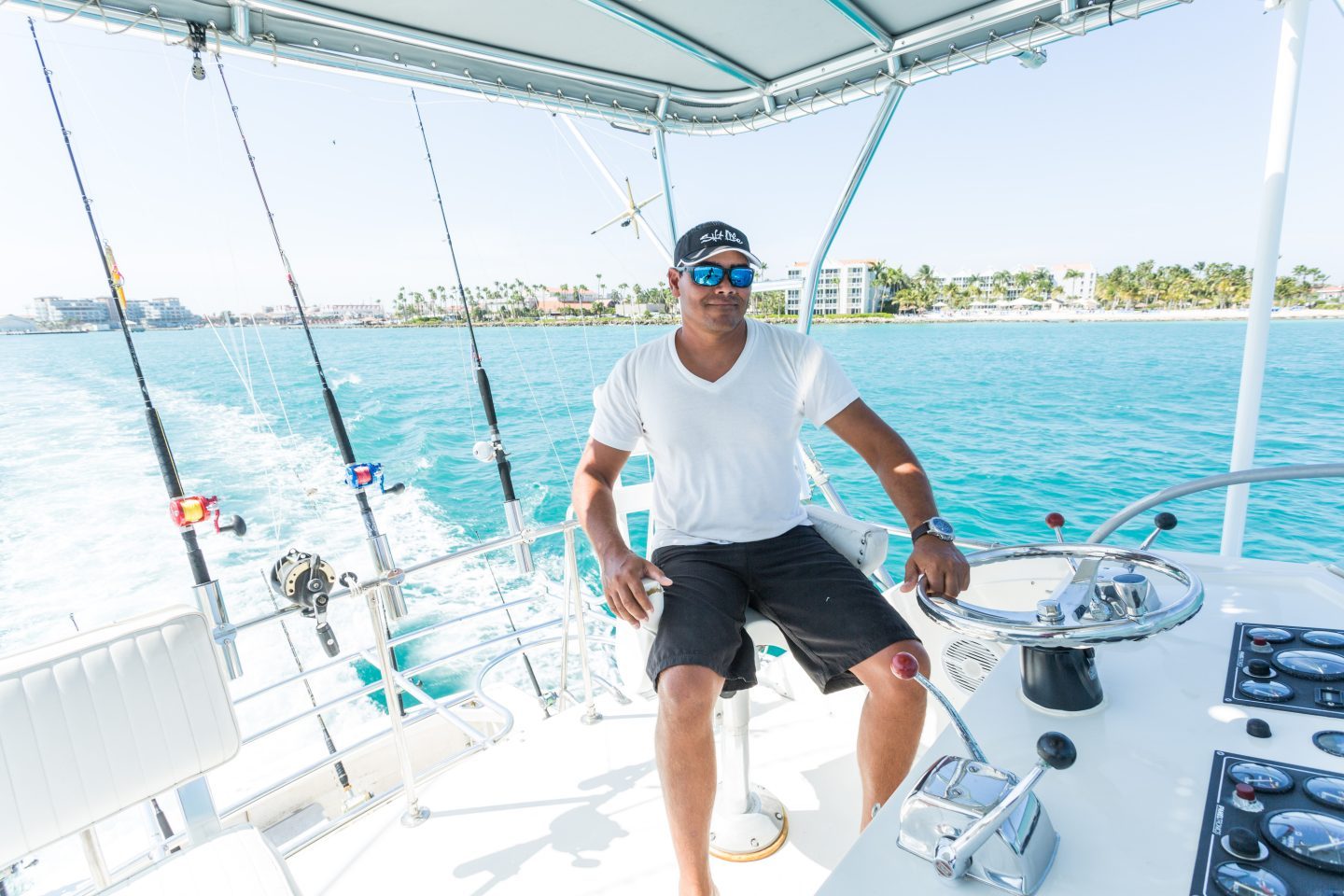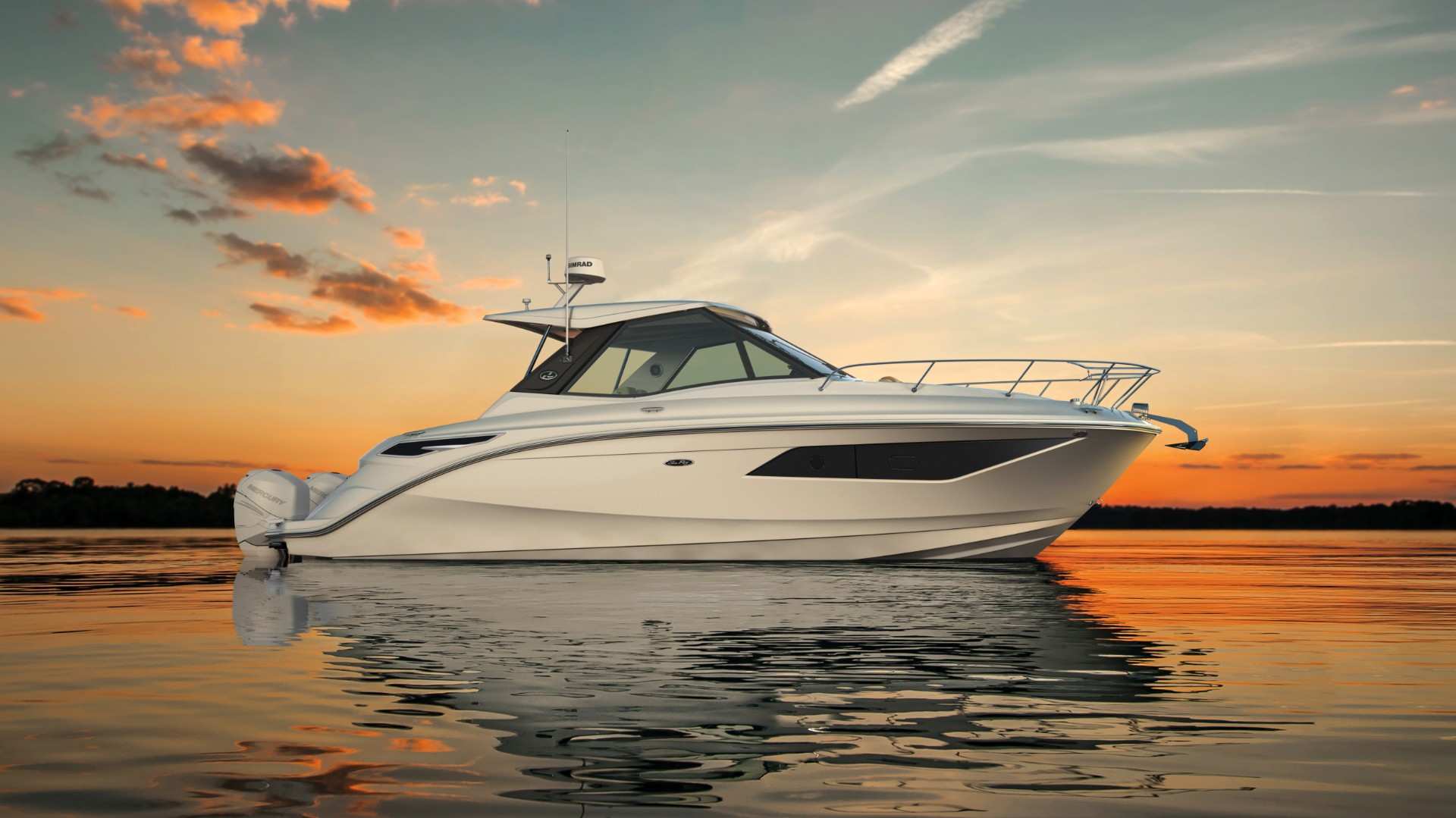Flats Boats
Flats Boats: A Comprehensive Guide for Anglers and Enthusiasts
Flats boats are a popular choice among anglers and boating enthusiasts who frequent shallow water environments. These boats are specifically designed to navigate in shallow water with minimal disturbance, making them perfect for fishing in coastal flats, marshes, and backwater areas. Flats boats are typically lightweight with a shallow draft, allowing them to glide effortlessly over shallow waters without disturbing the aquatic life beneath.
Different types of flats boats are available on the market, varying in size, design, and performance capabilities. Prominent manufacturers and models offer ideal options for those seeking a boat tailored to their needs and preferences. A well-designed flats boat can be equipped with various components, including powerful engines, state-of-the-art marine electronics, and safety features to ensure a smooth and enjoyable experience on the water. Fishing from a flats boat provides anglers with unparalleled access to hard-to-reach fishing spots and an unmatched opportunity to catch elusive fish species.
Key Takeaways
- Flats boats are designed for navigating shallow waters and are popular for fishing in coastal environments.
- Various models of flats boats cater to different needs and preferences, featuring customizable components and marine electronics for enhanced performance.
- Boating activities on flats boats range from fishing in hard-to-reach areas to exploring remote destinations with ease and minimal ecological impact.
Understanding Flats Boats
Defining Flats Boats
Flats boats, also known as flats skiffs, are lightweight and small vessels primarily designed for fishing in shallow waters, specifically in southern waterways. The primary goal of these boats is to have a minimal draft in order to navigate and operate efficiently in shallow water. They are specialized for use in areas like the Florida Keys, where broad expanses of protected waters are present.
Special Attributes of Flats Boats
There are a few special features that set flats boats apart from other fishing boats:
-
Flat bottom with low draft and wide beams: These boats typically have a flat bottom, allowing them to glide smoothly over shallow waters. The low draft and wide beams minimize water displacement, providing access to shallow water flats with ease.
-
Poling and casting platforms: Flats boats include poling platforms at the stern and casting platforms at the bow. These platforms provide an elevated vantage point for anglers, enabling them to spot fish in shallow water while providing ample space for casting.
-
Low freeboard: The freeboard, or the distance from the waterline to the boat's gunwale, is low in flats boats. This helps anglers get closer to the water surface and allows for more accurate casting.
-
Customizable: Flats boats often come with various options for customization, allowing anglers to tailor the boat to their specific needs and preferences.
These attributes make flats boats ideal for fishing enthusiasts who need a small, maneuverable vessel to navigate the shallow waters where their targeted fish species are found. Boaters gain a significant advantage in pursuing their quarry using a flats boat, as it has been precisely designed to handle the unique challenges associated with shallow-water fishing.
Types of Flats Boats
Skiffs
Skiffs are versatile and popular among flats boat enthusiasts. They come in various sizes and designs that cater to differing needs of anglers. These boats are lightweight and easily maneuverable, making them ideal for navigating shallow waters. Skiffs provide a stable platform for fishing and are often equipped with features such as poling platforms to aid in sight fishing.
Poling Skiffs
Poling skiffs are a specialized subset of skiffs that are designed specifically for shallow water fishing. These boats are distinguished by their shallow draft and flat, or nearly-flat, hulls that enable them to navigate with ease through shallow waters. Poling skiffs often come equipped with a poling platform, which allows the angler to stand above the boat and pole it through the water while maintaining a high vantage point for spotting fish. The combination of the shallow draft and the poling platform makes these boats perfect for fishing in environments where traditional boats would not be able to access.
Fishing Machines
Fishing machines are the ultimate flats boats, designed with the angler's needs in mind. These boats are often equipped with state-of-the-art electronics, high-quality rod holders, and ample storage for tackle and gear. Additionally, fishing machines typically have a larger carrying capacity and the ability to navigate more challenging water conditions compared to other flats boats.
In summary, flats boats come in various types, such as skiffs, poling skiffs, and fishing machines. These boats cater to the specific needs of anglers who enjoy fishing in shallow water environments. With their lightweight designs, easy maneuverability, and specialized features, flats boats provide an ideal fishing platform for enthusiasts.
Prominent Manufacturers and Models
Hewes and Maverick
Hewes and Maverick are known for their high-quality flats boats, offering a variety of models designed for different angling scenarios. The Hewes Redfisher 18 is a popular choice among fishermen, known for its versatility and shallow draft capabilities. Meanwhile, Maverick's 18 HPX-V is another top-performing model, boasting great stability and impressive performance in varying conditions.
Yellowfin
Yellowfin is another well-respected manufacturer of flats boats. Their designs prioritize speed, maneuverability, and exceptional performance in shallow waters. Many anglers trust Yellowfin's reputation for providing top-of-the-line flats boats built for dedicated fishermen and their most demanding applications.
Mako
Mako offers a range of versatile flats boats and has developed a strong following among anglers. The Mako 18 LTS is a popular model with many useful features and excellent shallow water performance. Known for their durability and well-crafted designs, Mako creates long-lasting fishing machines that provide quality fishing experiences for their owners.
East Cape and Chittum
East Cape and Chittum are both manufacturers that specialize in custom-built flats boats. East Cape's EVO and Vantage models offer a combination of performance and comfort, ensuring each boat suits its owner's unique fishing preferences. Likewise, the Chittum Islamorada 18 Legacy is highly regarded for its attention to detail and dedication to craftsmanship, making it a sought-after option for anglers seeking the pinnacle of flats boat performance.
Each of these manufacturers offers unique strengths that contribute to their success within the flats boat market. By prioritizing performance, versatility, and dedicated craftsmanship, these brands remain at the forefront in providing high-quality flats boats for the angling community.
Components of Flats Boats
Console and Transom
The console in a flats boat is typically a center console, which provides easy access to the controls and ample space for fishing gear. This design allows for better maneuverability and more efficient use of the available space on the boat. The transom, on the other hand, is often built with fold-down seats and cushions, allowing for comfortable seating while also maintaining the boat's shallow-draft capabilities for navigating skinny waters1.
Storage and Gunwales
Storage is a crucial aspect of any flats boat design. These boats often feature ample storage compartments, designed to accommodate fishing gear, personal items, and other essentials for a day out on the water. The gunwales, or the boat's sides, also play a vital role in maximizing storage options. Built-in rod holders, tackle boxes, and various other storage compartments can be integrated into the gunwales to add convenience and keep the boat organized2.
Casting Platforms and Rod Holders
Casting platforms are an essential component of flats boats, providing anglers a stable and elevated platform from which to cast their lines and spot fish in shallow waters. These platforms are typically built on the bow and sometimes at the stern of the boat, allowing anglers to easily swap between fishing spots. Rod holders are another key feature of flats boats. These can be found built into the gunwales or added as standalone accessories, allowing for easy access and storage of multiple fishing rods while also keeping the deck uncluttered3.
Footnotes
-
https://www.boattrader.com/research/flats-boats-overview-shallow-saltwater-fishing-machines/ ↩
Flats Boating Performance
Stability and Deadrise
Flats boats are specifically designed for fishing in shallow waters. One of the key aspects of their performance is their stability, which relies on the deadrise angle of the boat's hull. Deadrise refers to the angle formed by the hull surface and the horizontal plane. Flats boats typically have a shallow deadrise, resulting in a flat bottom that offers excellent stability in calm, shallow waters.
The shallow deadrise also allows the boat to maintain stability when operating in shallow waters, making it easier for anglers to stand and move around without causing the boat to tilt. Additionally, a lower deadrise angle helps minimize draft, which is crucial for navigating shallow waters and easily accessing prime fishing spots. However, boats with lower deadrise angles can be less comfortable in choppier waters due to their reduced ability to cut through waves.
Speed and Maneuverability
Flats boats are known for their impressive speed and maneuverability, which enables them to quickly reach shallow water fishing spots and navigate tight turns with ease. The lightweight design of these boats contributes to their speed, while the flat hull allows for smooth planing and swift acceleration. Some popular flats boats include the Maverick 18 HPX-V and the Yellowfin 17CE, which are renowned for their performance capabilities.
Maneuverability is another critical aspect of flats boats' performance, as it allows anglers to deftly navigate tight waterways and avoid obstacles. The combination of a flat hull, shallow draft, and powerful outboard engines provides these boats with excellent handling and responsiveness. As a result, flats boats are not only suitable for fishing in shallow waters but can also be used effectively to pursue fish in winding and narrow waterways.
In summary, flats boats are built with an emphasis on stability, speed, and maneuverability, making them ideal for shallow water fishing. Their shallow deadrise angle provides the necessary stability in calm conditions, while their lightweight design and powerful engines allow them to reach high speeds and navigate tight turns with ease.
Fishing from Flats Boats
Selecting Gear
When fishing from flats boats, anglers should choose gear specifically designed for shallow-water fishing. Suitable rods and reels are essential to target various game fish species like bonefish, redfish, snook, permit, and tarpon. A lightweight and flexible rod, paired with a durable reel, will provide the necessary precision and sensitivity to detect subtle bites in shallow waters.
In addition to rods and reels, specialized baits and lures come in handy when targeting specific game fish. For example, soft plastic baits are effective in attracting redfish, whereas artificial shrimp lures work well for bonefish. Furthermore, having a reliable flats fishing boat with a shallow draft allows anglers to navigate and access the flats with ease.
Ultimately, appropriate gear selection ensures a more enjoyable and successful shallow-water fishing experience.
Specialized Fishing
Fishing from flats boats requires specific strategies and techniques tailored to shallow-water environments. These techniques often involve stealthy approaches, careful casting, and accurate lure presentation to avoid spooking fish.
One essential aspect of specialized fishing from flats boats is the use of a livewell. The livewell allows anglers to keep live bait, such as shrimp or minnows, fresh and ready for action. Moreover, a separate compartment in the livewell can be dedicated to keep caught fish alive until they are either released or brought to shore.
Poling is another technique commonly used in flats fishing. Utilizing a long pole, anglers or guides can silently propel the boat, allowing a stealthy approach to game fish locations. This low-profile approach is particularly useful when targeting elusive species such as bonefish, tarpon, and permit.
In summary, employing specialized fishing techniques and selecting the right gear are essential components for a successful shallow-water fishing experience from a flats boat.
Boating Activities and Destinations
Florida Flats Boating
Florida is a popular destination for flats boat enthusiasts due to its diverse coastal habitats and rich fishing opportunities. The Sunshine State offers countless shallow water fishing spots that are perfect for sneaking up on the fish with a flats boat. In Florida, anglers can target species such as redfish, tarpon, bonefish, and snook.
Some recommended flats fishing locations in Florida include the Indian River Lagoon, Tampa Bay, and the Florida Keys. The Indian River Lagoon is the largest lagoon system in the US and offers over 150 miles of fishable flats. The crystal-clear waters of the Florida Keys provide sight-fishing opportunities for anglers in search of bonefish, permit, and tarpon. The Tampa Bay area is well-known for its grass flats, which attract redfish, seatrout, and snook.
International Destinations
For those looking to venture outside of the United States, there are several international destinations that offer incredible flats fishing opportunities. One such destination is The Bahamas, where anglers can hire a fishing guide to explore the shallow waters around the island chain. The Bahamas is home to some of the most pristine and productive flats in the world. Anglers can expect to encounter species such as bonefish, permit, and tarpon, as well as other exotic fish like the barracuda and mutton snapper.
For those interested in truly unique sport fishing expeditions, destinations like Belize and Mexico's Yucatan Peninsula are well worth considering. Belize boasts the world's second-largest barrier reef system, offering an abundance of flats fishing opportunities for species such as bonefish, permit, and tarpon. Mexico's Yucatan Peninsula is home to expansive flats that attract a variety of game fish, including bonefish, permit, tarpon, snook, and barracuda.
In summary, flats boats allow anglers to access shallow water habitats that are often rich with fish. Both Florida and a variety of international destinations offer exceptional opportunities for flats fishing enthusiasts. By considering the locales mentioned above, avid anglers can find exciting and rewarding fishing experiences in diverse, world-class environments.
Boat Buying Guide
Price and Budget
When considering the purchase of a flats boat, it is essential to establish your budget first. The price range for flats boats varies significantly depending on factors such as size, brand, and features. It's important to research and compare the options that fit within your budget to ensure you make the best choice for your needs. Some top-rated flats boats, such as the Maverick 18 HPX-V, are designed to navigate shallow waters while providing high performance.
Keep in mind that the price of a new boat may not include additional expenses like insurance, maintenance, and storage. Considering your overall budget helps avoid unwanted surprises and ensures a seamless boat-buying experience.
Boat Reviews and Comparisons
Before committing to a particular flats boat, it's crucial to read fishing boat reviews and comparisons. This helps you gain a deeper understanding of the boats' performance, features, and overall quality. Some reputable online platforms, such as Salt Water Sportsman and BoatGuide.com, offer valuable insights and information that can help you make an informed decision.
When comparing flats boats, consider aspects such as:
- Hull design: The hull should be suited for shallow water conditions and offer good stability both at rest and while cruising.
- Deck layout: A spacious and functional deck layout with ample storage space is essential for a comfortable fishing experience.
- Performance: Look for boats with good handling, maneuverability, and adequate speed to ensure efficient and enjoyable fishing trips.
- Quality and durability: Research the reputation of the boat manufacturer to ensure the boat is built with quality materials and will last for years to come.
Taking the time to research and compare the best flats boats according to your specific needs and preferences is a crucial step in finding the perfect boat for your angling adventures.
Marine Electronics and Safety
When it comes to flats boats, ensuring boating safety and enhancing your on-the-water experience involves investing in the right marine electronics. Properly equipped electronics not only add convenience to your fishing trips but also play a crucial role in maintaining a safe and secure journey.
An essential piece of marine electronics for flats boats is a reliable GPS/Chartplotter. This device offers accurate navigational information and an easy-to-read display. A chartplotter ensures that boaters remain oriented while navigating the shallow waters typical of flats-fishing environments. This enhances safety by helping anglers avoid grounding or collisions and aids in the timely return to their departure point.
Another helpful piece of electronic equipment is a fishfinder. With a fishfinder, anglers can quickly and efficiently locate fish in the flats, optimizing their chances of a successful catch. Moreover, fishfinders provide valuable information about the underwater environment, including depth, structure, and water temperature, which can significantly contribute to boating safety and success.
Install a VHF radio for communication and weather updates during your fishing trip. VHF radios are essential safety tools that allow for direct communication with other vessels and emergency services. They can also provide real-time weather updates, ensuring that anglers are prepared for any sudden changes in conditions.
Lastly, a marine battery charger is an important component for maintaining your boat's electrical system. A quality charger ensures that your boat's batteries are always properly charged and ready for use. This not only lengthens the life of your batteries, but also adds an extra layer of safety by ensuring that your boat's power supply functions effectively throughout your trip.
In summary, integrating the right marine electronics enhances safety, convenience, and success in flats-fishing endeavors. These devices should be considered as invaluable investments for any angler looking to optimize their flats boat experience.
Fly Fishing on Flats Boats
Flats boats, also known as flats skiffs, are specialized fishing vessels designed for navigating shallow waters. These boats are perfect for anglers who enjoy the challenge of fly fishing in skinny waters, targeting species like bonefish, redfish, permit, snook, stripers, and tarpon.
One of the key attributes of flats boats is their shallow draft, enabling them to maneuver in water as shallow as a few inches. This is especially important when fly fishing, as the angler needs to be able to silently approach fish in gin-clear waters without spooking them.
When it comes to fly fishing on flats boats, rod storage is vital for keeping your gear organized and maintaining a clutter-free deck. Many flats boats come equipped with built-in rod racks, making it easy to store multiple fly rods while keeping them readily accessible during your fishing trip.
These boats also offer ample casting space with wide, open decks, allowing anglers to make uninterrupted casts. Additionally, the boats have a low profile, minimizing wind resistance and further enhancing casting accuracy.
Another important feature of flats boats is their poling platform. This elevated platform at the stern of the boat allows an angler or guide to pole the boat silently through shallow waters, stalking fish without the use of a noisy motor. The platform also gives the person poling a better vantage point to spot fish and direct the angler.
Some flats boats are even equipped with trolling motors, providing a quiet alternative to the traditional outboard motor. These motors are essential when needing to adjust the boat's position or make slight movements while staying stealthy.
Fly fishing on flats boats offers a unique and rewarding experience, giving anglers the chance to target elusive species in shallow water environments. With the right boat and proper rod storage, any fly fishing enthusiast can make the most out of their time on the water.
Frequently Asked Questions
What is the primary purpose of a flats boat?
A flats boat is specifically designed for fishing in shallow, protected waters. They are common in hot fishing spots like the Florida Keys, where expansive shallow waters – or "flats" – require a specialist boat for safe and efficient fishing.
What features make a flats boat unique?
Flats boats typically have a flat bottom with a low draft and wide beams, enabling them to float in very shallow waters – often as little as 8-10 inches. They are also characterized by forward and rear decks that are flush with the gunwales, allowing for easy movement and fishing access. Additional features include poling and casting platforms and a low freeboard, all of which maximize functionality for shallow water fishing.
How do bay boats differ from flats boats?
While both flats boats and bay boats are designed for shallow water fishing, there are some key differences between them. Flats boats focus on extremely shallow waters and typically have smaller sizes and shallower drafts. Bay boats, on the other hand, are slightly larger and can handle slightly deeper waters and rougher conditions, making them more versatile for various fishing situations and environments.
Are flats boats suitable for ocean conditions?
Flats boats are primarily designed for sheltered, shallow waters and may not be well-suited for open ocean conditions. Their low freeboard and shallow draft make them vulnerable to waves and rough waters, which can pose safety risks in ocean environments. However, they can still be used for nearshore fishing in calmer conditions.
What materials are commonly used for building flats boats?
Most flats boats are constructed from fiberglass, which provides a strong and lightweight structure ideal for shallow water navigation. Fiberglass is also resistant to corrosion and rot, making it a durable choice for boats that will be exposed to saltwater.
How do you maintain a flats boat properly?
Regular maintenance of a flats boat includes rinsing with fresh water after each use, especially in saltwater environments, to prevent corrosion and buildup of salt deposits. Periodically inspecting and repairing any damage to the hull, hardware, and engine systems is also crucial. Additionally, be sure to check and maintain all electrical connections and keep your boat's fuel system clean and running efficiently. Proper storage, either by using a boat cover or storing the boat in a sheltered area, can also help protect it from the elements and prolong its lifespan.

